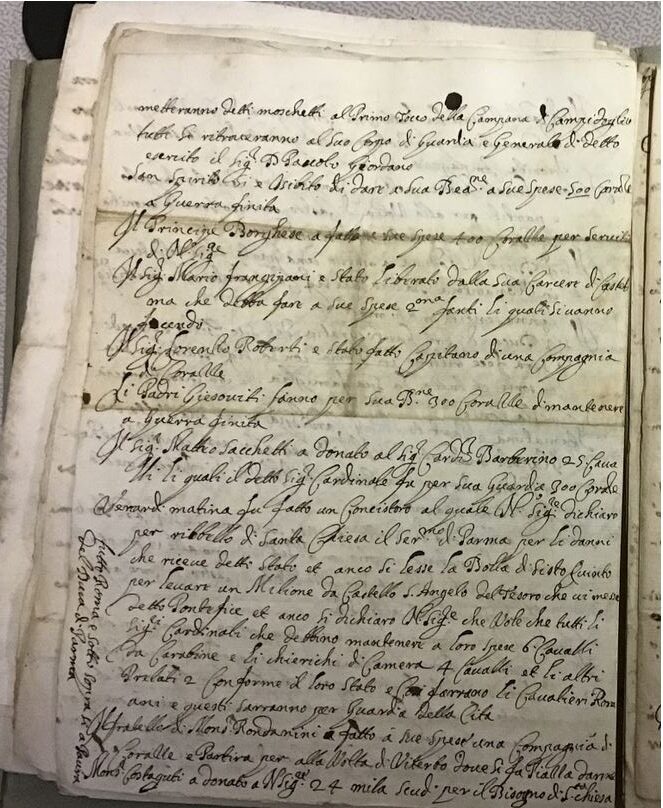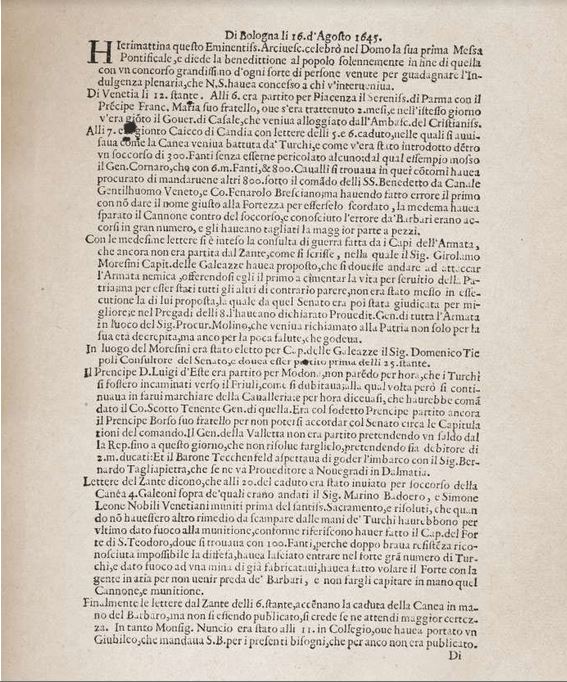As an instrument of communication, the avviso had advantages and disadvantages. Advantages included the simple technology, the straightforward easily recognizable format adaptable to any time or place, the relative freedom of expression accorded to nonprint media, the anonymity, the odor of secrecy and privilege that attracted a certain kind of audience. Disadvantages included the lack of means for highlighting particular items, the time required for making large numbers of copies, and finally, the sheer size of legible handwritten characters relative to the space on a page considering the high cost of paper.
That brings us to the example we are featuring in this post, a newsletter from Rome, dated 10 Nov. 1646, of which the final page looks like this:
vol. 4028a, fol. 774v, 10 Nov. 1646.

Notice how the writer of the newsletter (or avviso) attempts to cram in more material at the end--in this case, regarding strife between the Orsini and Barberini clans and other assorted matters--rather than simply starting another sheet. Laziness perhaps, but more likely frugality, considering the relatively high cost of rag-based paper in the old regime before wood pulp.
Consider another example of text cramming, from 20 September 1642:
vol. 4028a, fol. 259, 20 September 1642

Note how the main text ends with the words, “Monsignor Costaguidi a donato a Nostro Signore 24 mila scudi per i bisogni della Chiesa,” for which the writer found barely enough space, but he still had not managed to squeeze in the last piece of news, so he wrote that in sideways in the left-hand margin: “Tutta Roma è sotto sopra, si a paura del duca di Parma.”
Without going into the fears felt by Romans during the first War of Castro regarding the Duke of Parma, indicated in this quotation, the example shows how the writer has managed to say what he needed to say, at the limits of the medium at hand.
In fact, the amount of material that might fit into an avviso varied extremely. Mediceo del Principato vol. 3082 fol. 367 recto and following, features an avviso ten pages long. But the average was four to eight folios, in handwritings that could vary widely in size and compactness. The example we just analyzed in vol. 4028a, fol. 259v, contains, on a single side of a page, circa 330 words. On the other hand, the example above, from fol. 774v, including the crammed text, runs to roughly 570 words per page. Trouble was, the more cramming, the less readable the text became.
Cramming had limitations, but technology offered an answer. The first printed newspapers, appearing in Germany in 1605 and in Italy in 1636 (Florence) basically reproduced what was in the newsletters which happened to be at the disposal of the writers and publishers. However apart from the advantage of extensive reproduction, a particular characteristic of the new medium, compared to the old, was the economical use of space, as we see in the following example from the Bologna gazette of 16 August 1645 conserved at the Biblioteca Comunale dell’Archiginnasio:

Note the clearly legible type, a far cry from the manuscript examples. Note also the parsimonious use of paper: in contrast to the most desperately crammed pages in the manuscript newsletter regime, this first page easily carries its total of 650 words, although even more could have been packed in if necessary using the two-column format already featured in the Dutch papers.
Space was indeed the final frontier….. Or was it?
FURTHER READING
Mario Infelise. Prima dei giornali: alle origini della pubblica informazione, secoli XVI e XVII. Milan: Laterza, 2002
Heiko Droste and Kirsti Salmi-Niklander, eds. Handwritten Newspapers: An Alternative Medium during the Early Modern and Modern Periods. Finnish Literature Society. Helsinki: SKS, 2019
